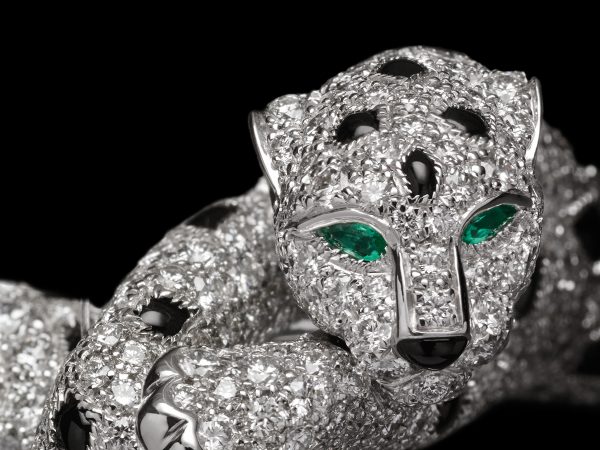
When he was named chief executive of Cartier International in 2016, Cyrille Vigneron was given the unenviable task of defining a new strategy for the luxury jeweler and building bridges within the Cartier organization “to make everyone feel part of the maison” owned by the Richemont luxury conglomerate.
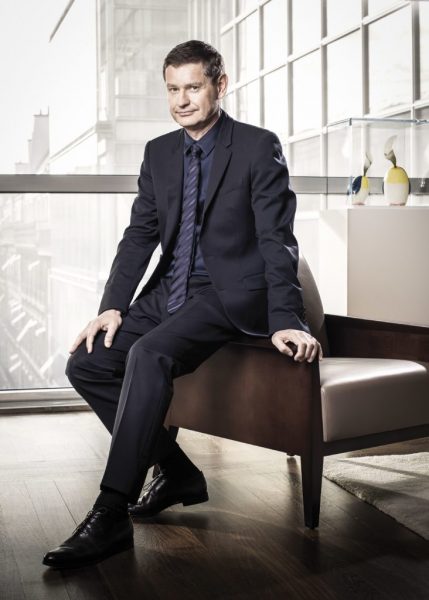
Three years later, with the precision of the engineer he once was, Vigneron has managed to streamline Cartier’s collections, balance global inventories, revive heritage models with the most enduring appeal, reposition the brand across price points, and strengthen the desirability of Cartier on a global scale. He has also reconnected with staff using art.
Though he is often asked about the business of Cartier, Vigneron rarely speaks about his own passion for art and the role that visual arts play inside the luxury maison.
In the Paris office where his own photographs hang above his desk, across from an other-worldly image of Cai Guo-Qiang’s Sky Ladder and under the watchful eyes of a pair of whimsical penguin vases by Takeshi Kitano, Vigneron spoke with us about his love of photography, how art aids creativity at Cartier, and what his staff has learned about contemporary art.
Tell us about with your own connection to art.

Art and culture are very important to me. I enjoy choosing all the artwork you see in my office. I am especially interested in photography, composition, texture, and the use of light. I take photographs with my iPhone but only share them internally on Cartier’s social network. I also create postcards wherever I go. My postcards from India were all about how violently colorful things are in the country. I also like to write. My book about Japan, where I lived for years, De Geishas en Mangas, was published in 2009. I play the guitar and also compose music.
What role has art played in the creations of the Maison Cartier?
We understand the importance of art and culture as a source of inspiration or for its own raison d’être. It is true that we do not have an artistic director here like at fashion houses where a “star” designer does everything from collections to stores to runway shows. But we are no less creative. Our maison’s patrimony is the “star,” and art is a key source of inspiration that enables us to renew our creativity in the service of that patrimony.
What are some historical examples where art has inspired Cartier?
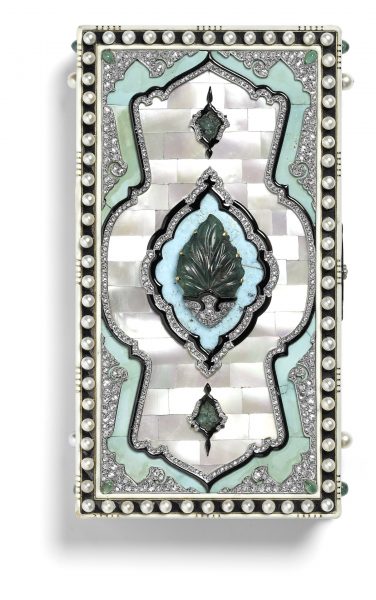
Whether it is photography, painting, sculpture, or design, the arts define who we are at Cartier. Some of our creations were directly linked to the aesthetics of the Mughal period in India with Cartier looking less to local jewelry and more to miniature paintings. Also, geometric shapes found in Islamic Art inspired the designs of some of our accessories and the ornamental “guilloché” patterns in our watches. Art motifs enter Cartier’s vocabulary and then we use them in intuitive ways, on products without a logo or in the architecture of our booths or boutiques, so that our clients feel they are walking into Cartier’s universe. It is all part of how we interpret motifs and turn them into something contemporary yet identifiable as the style of Cartier.
Tell us how Cartier became a pioneer in France when it established its art foundation in 1984.
Private foundations like the Fondation Maeght in the South of France existed at the time, and they used private funds to show their own art collections. In 1984, Cartier did something very different. It created a place open to the public without a collection but with a specific mission, to support the creation of contemporary art. The idea from the outset was for the art center to be close to the Maison Cartier, yet remain totally independent, and contribute to creating new art. At first, there was an artist’s residence at the Jouy-en-Josas location, but when the Fondation moved to the center of Paris, that was no longer possible. Cai Guo-Qiang, whose photograph is hanging on the wall here, is a fantastic artist who was one of the first to be in residence with us.
How does Cartier support the work of the Fondation?
I am on the programming board and also involved in the process of producing traveling exhibitions. Programming is a collective decision based on propositions made by the Fondation’s director, Hervé Chandès.
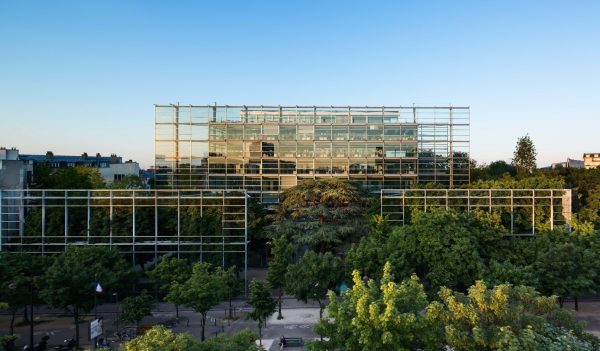
Financially, Cartier covers the costs of the Fondation to the tune of about €10 million. Overall costs are higher and we do not try to turn this into a profit center, but the Fondation itself generates revenue from exhibitions, ticket sales and its bookstore.
In 2014, the Fondation celebrated its 30th anniversary. Has this been a happy marriage with the maison?
For us, the Fondation Cartier has always been an open window onto contemporary art and the fast-evolving world of artists. Interestingly, the French cultural establishment viewed Cartier’s initiative with suspicion at first. Culture was deemed the domain of the state, and too important to be left to private enterprise. Because Cartier had made it its mission to support contemporary creation, some questioned whether that mission would become too mercantile and undermine the “sacred” value of art. To make sure there was no such risk, we established the Fondation Cartier as absolutely independent with no direct relationship to the business of the Maison Cartier.
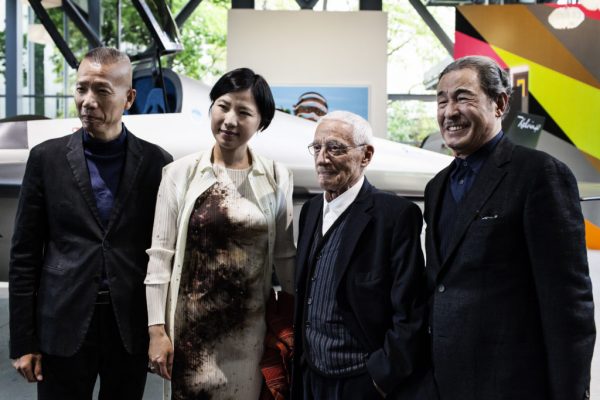
Do you encourage your staff to learn about contemporary art?
We realized a few years ago that there was little understanding in house of contemporary art. We thought that the Fondation could serve as a tool to educate the Cartier staff. But we had to go back to basics, and start with Marcel Duchamp. We also had to explain that beauty is no longer the main driver of art, and that art today can speak of something strong, something about the world, but can be ugly or shocking. It has been quite an eye-opening exercise for everyone at Cartier.
*extracted from artnet
